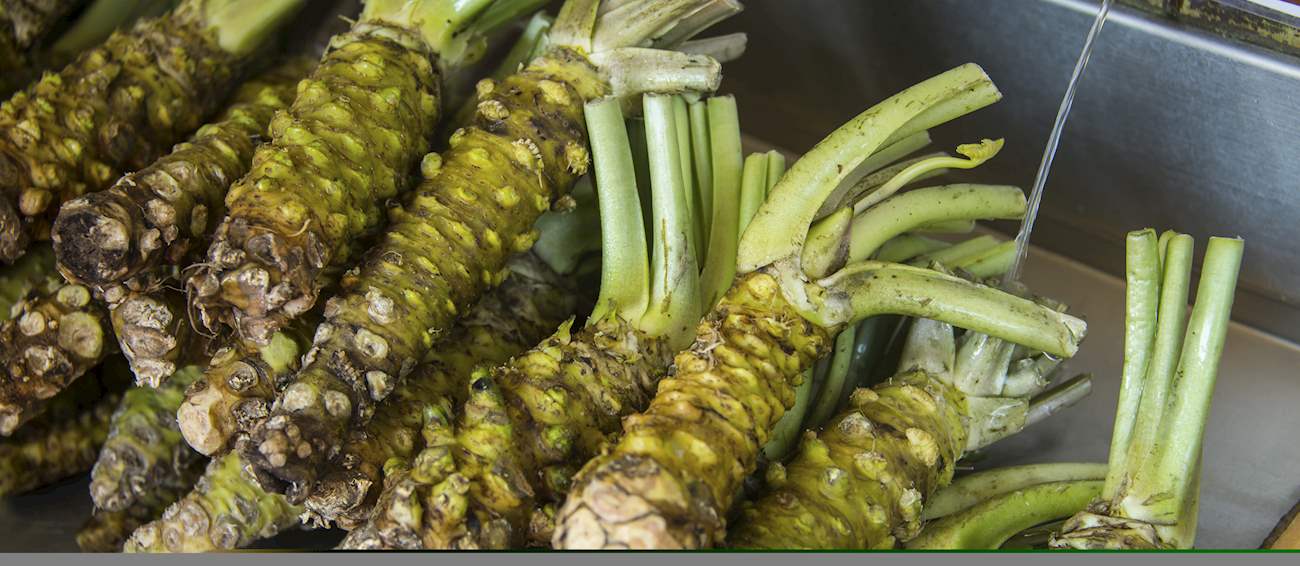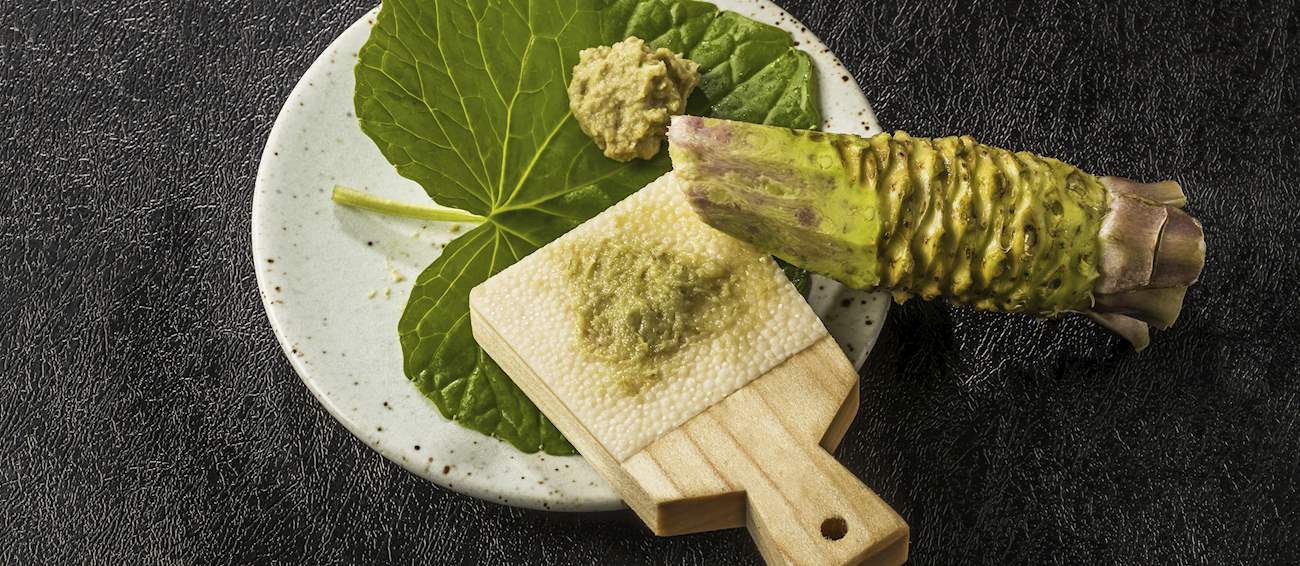Wasabi
Wasabia Japonica, better known as wasabi, is a plant native to Japan that is harvested for its lumpy rhizome, which is predominately used as a popular sushi condiment. The plant grows only in damp areas, usually in streams or artificial water beds.
It is difficult to grow and takes up to two or three years to mature. The rhizome is typically grated against textured sharksin that is attached to a wooden board. Grated wasabi develops its signature pungency after a couple of minutes, but most of its flavor tends to disappear quickly, and true wasabi always needs to be freshly grated, right before it is served. Though wasabi paste is an internationally acclaimed sushi condiment, due to its cost, it is estimated that only 5% of the restaurants use fresh wasabi, while the rest opt for a much cheaper combination of grated horseradish and green food coloring, or various alternatives prepared with dry wasabi powder.
High-end restaurants that serve genuine wasabi usually refresh the condiment during the meal. Unlike the cheaper blends, fresh wasabi paste has a delicate pungency and a smooth and subtle herbal flavor. Besides being used with sushi, the paste incorporates well in dressings and sauces.
Part of
Negitorodon
Characterized by an incredibly mild and refreshing flavor, negitorodon is a simple Japanese dish which consists of pieces of raw fatty tuna served over rice. Traditionally,... Read more
Soba maki
Soba maki is a traditional dish in which soba meets maki sushi. In order to prepare the dish, sushi rice is replaced with chilled soba noodles, made from buckwheat flour.... Read more
Sasami yakitori
Sasami is a traditional yakitori dish made with chicken meat from the inner breast, also known as chicken tenders. This type of meat is high in protein and low in fat.... Read more
Mune yakitori
Mune is a traditional yakitori dish made with chicken breast meat as the main ingredient. The pieces of chicken breast are placed on a skewer, then grilled until done.... Read more
Serve with
Maki
Makizushi, meaning rolled sushi, is probably the most famous sushi variety. Invented in the 18th century, this type of sushi consists of nori, a sheet ... Read more
Sashimi
Sashimi is a Japanese delicacy consisting of thinly sliced raw fish or shellfish (or even meat) served with soy sauce and other ingredients&... Read more
Best Wasabi
Zoobee
Fresh Wasabi

Daeryeok
Samkwang Fresh Wasabi Mild

Hikimi Wasabi
Hikimi Wasabi

Daio Wasabi Farm
Coarsely Chopped Wasabi Paste

Wasabiya Yuu
Fresh Wasabi






















